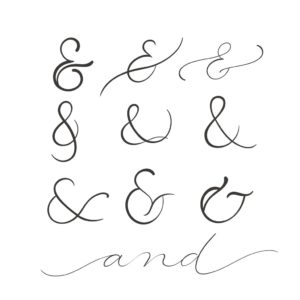Heard of Everything? …& more!
Although most people give very little thought to this symbol, it’s actually a symbol that has a long and storied history. It’s also a symbol that has its own holiday—a holiday that’s observed annually on September 8th and is known as National Ampersand Day. We think it’s the perfect day for people everywhere to celebrate, even if you don’t fancy yourself as a language nerd.

Ampersand Day
National Ampersand Day was invented by Chaz DeSimone, the founder of Amper Art in 2015. For those of you who don’t know, Amper Art is a website that was founded four years before the creation of this holiday to showcase ampersand art posters that Chaz Desimone has created.
The following facts will help to enlighten everyone about this interesting symbol. ¹
- The symbol “&” has been around for more than 1,500 years.
- The ampersand originally meant “et” or “and” in Latin.
- The ampersand was actually a part of the English alphabet during the early 19th century. It was the last letter in the alphabet.
- The ampersand is both a ligature and a logogram.
- It’s believed that the first ampersand was created by Marcus Tullius Tiro.
- The ampersand is a commonly used special character for people’s passwords.
- A lot of companies and brands use ampersands in their names and/or logos.
- Companies that currently use an ampersand include Ben & Jerry’s, M&M, Smith & Wesson, A&E, AT&T, and Barnes & Noble.
The History Of The Ampersand
The ampersand represents the conjunction “and.” This symbol is a logogram and began as a ligature of the letters “et,” Latin for the word “and.” It was a symbol that went back thousands of years but first shows up in English during the late 18th century. During the late Middle Ages, single letters that were not only letters but could also function as work, such as “A” and “I,” were referred to as letters by using the phrase “per se.” That phrase was used to clarify that the letter was being used in that context and not the word.
For example, if someone wanted to refer just to the letter “I” and not the word “I,” then they would say I per se, I.” This means in Latin “I by itself.” When the 27th letter of the English alphabet was added, “&” would be referred to as “& per se, and.” That meant “& per se, means and.” Eventually, that evolved into the word we now use, ampersand.
¹Holidays calendar


